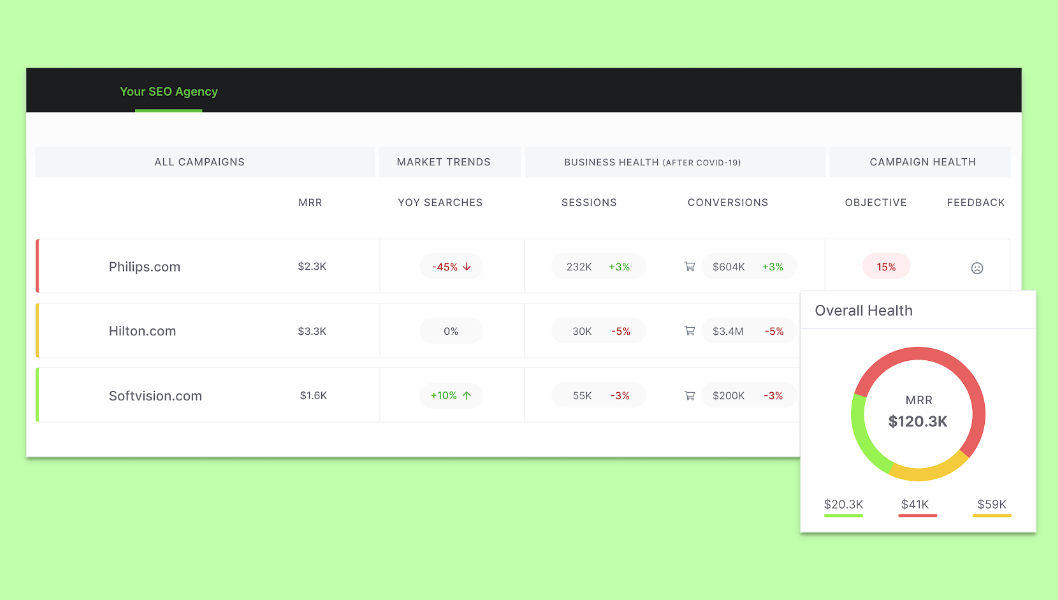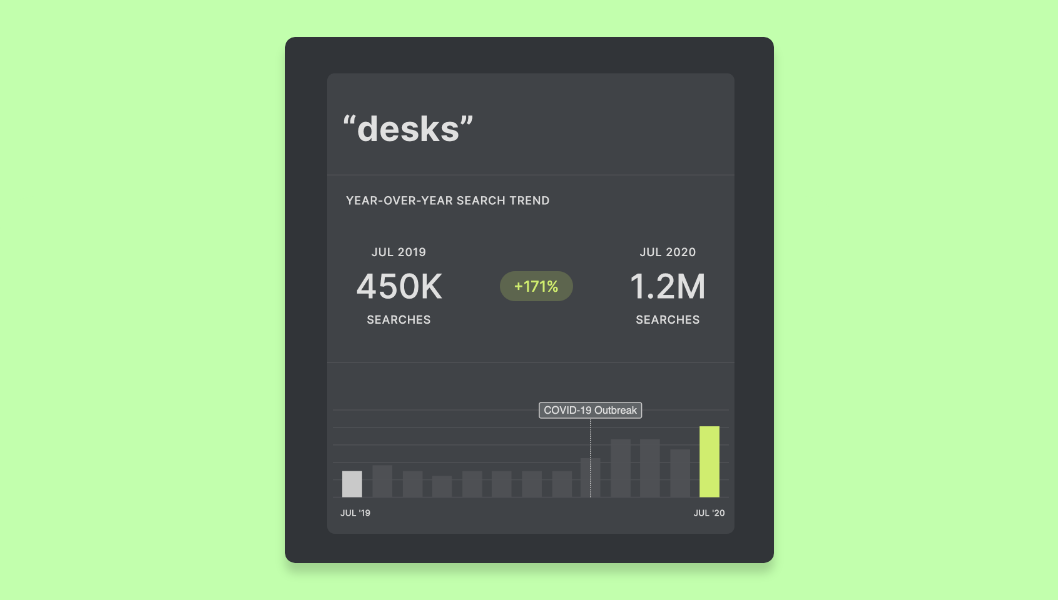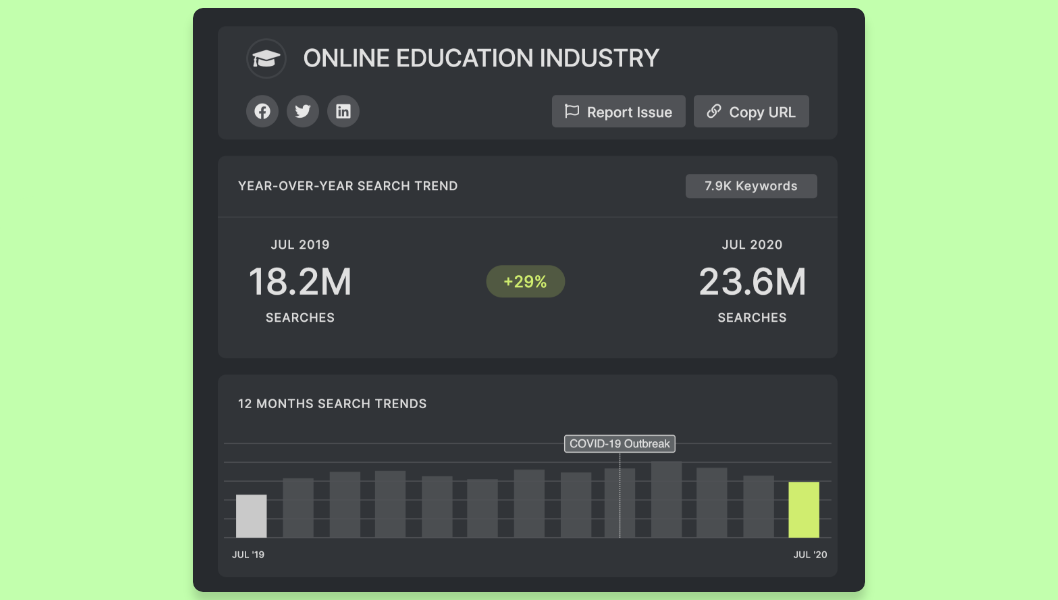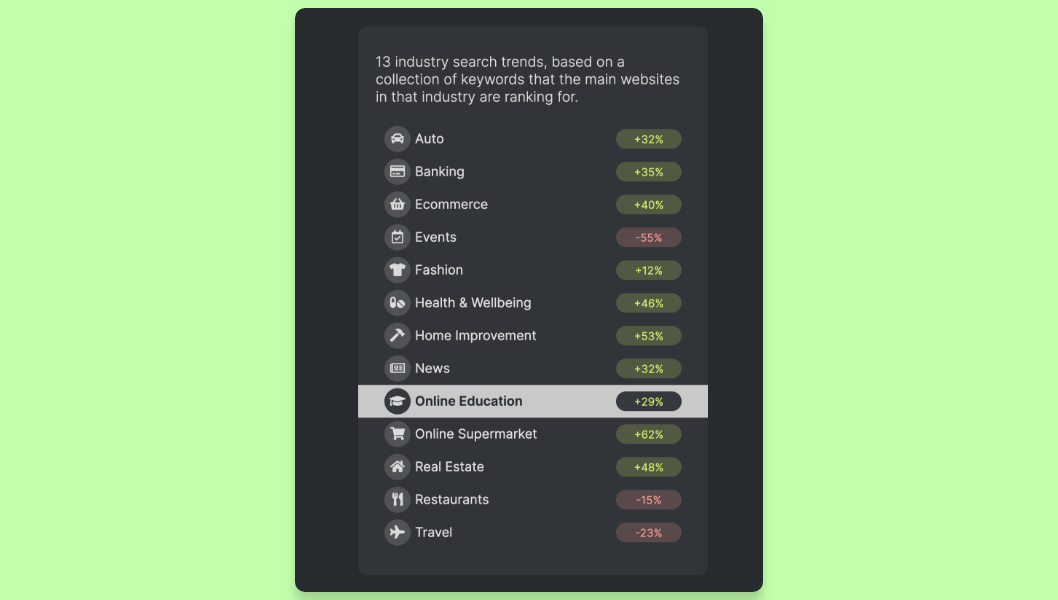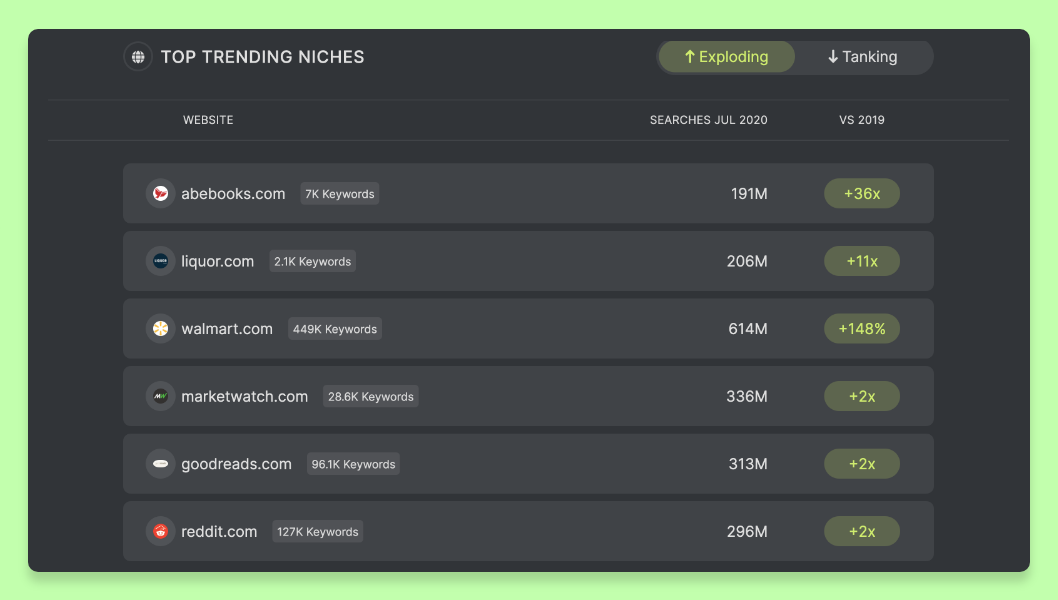An investor knows that managing assets involves managing risk.
It’s part and parcel of the deal.
So investors need to address risk mitigation from the start.
Hedging is one specific way to do so with a long-standing tradition and rate of success.
What can you learn from it for your SEO agency’s portfolio management and risk reduction?
Let’s say you’re an investor who believes in Apple’s long term value and you bought a lot of shares, but you fear that in the short run Apple might have trouble delivering enough products to satisfy the demand for Shopping Season due to constraints in the manufacturing chain.
To protect your investment, you decide to buy shares in the companies from the chain that are assembling all sorts of smartphones.
That’s hedging through diversification.
In short, hedging means choosing to invest in an asset X to reduce the risk of negative price movements in an asset Y, from the same industry. That way you balance your investment portfolio with diversification, having an index of companies at your disposal in that specific domain.
When applying hedging to customers, as this HBR evergreen article points out, you can think about your clients as assets and try to understand where your customer portfolio is right now.
You can also define a desirable customer profile while you’re evaluating your status quo, which balances your long-term revenue.
You can look at client diversification or fixed-price projects in your portfolio, analyze preferred industries or markets, and identify the strong and weak points.
“Think about your clients as assets and try to understand where your customer portfolio is right now.”
What is your monthly recurring revenue versus fixed income? What type of industries or verticals do you cater for? Are you targeting new segments?
Understanding Your Portfolio Status
The first step in starting to create a working strategy for hedging is evaluating the current status, which will help you answer all the questions above.
What Is the Health of Your Current Customers’ Accounts?
One lens of analysis is the health of your client portfolio which, as an SEO agency, you can get very specific in defining.
Here are the variables you can include when assessing a client’s profile:
- Monthly recurring revenue or MRR. As this is the common business model for agencies, you shouldn’t include special and one-time projects here.
- The goal set at the beginning of your SEO campaign versus now. How is the campaign performing? The status and evolution of the visibility score – an impression share taking into account the ranks of your keywords and their monthly search volumes, can be revealing.
- The number of monthly sessions and conversions. What is their trend?
Various methods can be employed for tracking the health of a client, but a semaphore system helps in quickly prioritizing your account managers’ energy.
Creating a health scale of good – average – bad that you can scan in green – orange – red for each client will not only let you know what businesses are struggling or growing but will give you an overview of your portfolio that you can compare with the desired version.
If you need to understand the connection between your client portfolio and your cost structure, you can also review the resources involved for each campaign in terms of man hours, allocated budgets versus reality, and so on. Or maybe you already have an operational dashboard at hand and you can export the one-year data for analysis.
How to Assess Your Clients’ Industry / Market Segment
Another lens to use when analyzing your current portfolio is the state of the clients’ industry. In today’s uncertainty, looking at the search volumes movement and the year-over-year trends is critical to track fast changes as search data shows where demand is.
Evaluating what’s a fad and what’s here to stay in terms of consumer behaviors and industry or market trends will help you further your assessment.
For instance, a clear cut “here to stay” trend is remote working, especially for the tech industry. If you have clients in the ecommerce or Home & Deco industries, then they’re positively impacted with demand for home office equipment (furniture, webcams and headsets, ergonomic chairs etc.), as those tech companies are making sure their employees have the best context for work.
Another growing industry that is pretty straightforward is online education – an opportunity for clients in this segment or, even, for other clients to enter the world of online courses and webinars-creation:
Analyzing search trends for each client will bring you clarity regarding the state of their industry, so you’ll now have a complete picture of your portfolio:
- How many exploding or tanking industries are you catering to?
- Is it temporary or does it seem to have a longer impact?
- Is your portfolio balanced in that regard?
Hedging Your Client Portfolio
Now, after the first step of evaluating your status quo, you can direct yourself to actual hedging – finding more of what industries and segments you should target.
There are a number of avenues to try when diversifying your portfolio, so let’s see what each entails.
Diversification by Industry
If you discovered the ratio of growing and decreasing industries already existing in your portfolio, then you can bring diversification to it to balance your risks.
Let’s take as an example an SEO agency that identified 30% of their MRR as pertaining to Travel. In COVID-19 times, this industry dropped by 50%. In order to apply the hedging strategy, they should drop their Travel MRR to 15% and “move” the other 15% in a growing industry like “Home & Deco” or “Health” to minimize the impact.
So based on the percentage of MRR each industry represents in your portfolio, your own preferences or expertise, and the search data highlighting trends, you can decide which industries to further invest in and which industries to balance out.
Or maybe you think it’s time to explore a new industry that is currently growing, as search data indicates a steady trend. Perhaps something like “Wellbeing”, “Fashion” or “Home improvement”.
Diversification by Vertical
If you have deep expertise in a certain area or even a strategic positioning that only caters to a specific vertical like Jazel Automotive or Gladiator Law Marketing, then diversification will take a different approach, so as to further expand your know-how.
Continuing our travel example, an SEO agency specializing in this vertical at an international level can hedge its portfolio by targeting travel insurance businesses or companies specialized in the recovery of flight expenses.
Another example would be an SEO agency focused on banking services that can further expand their expertise into fintech, targeting thriving startups and SMBs.
Think about ways that your expertise connects to other businesses in the same direction and what parts of it are translatable to those companies. That’s how you manage to balance your portfolio while maintaining your unique selling point.
Diversification by Geography
Whether your agency caters to a specific vertical or multiple industries, at some point you can ponder expanding your market reach. Hedging your portfolio through geography is, as its name suggests, diversifying the countries you sell your services in.
For instance, take these two agencies into consideration – Studio45, an India-based SEO agency and Dubai SEO Agency partnered so they can have access to new markets and expand their digital marketing offerings to new clients.
Through key partnerships or deciding to open your services to a larger market (say from Canada to North America) or an international market, diversification by geography lets your agency balance growth in terms of exploding versus tanking places.
Diversification by Turnover
One last form of diversification that we’re addressing is that by turnover.
After understanding how each client’s contract influences your MRR, you can draw some conclusions on what type of businesses you want to further target (startups, SMBs, enterprises etc.).
This step is all about research – check startup funding rounds, VC funds, and accelerators and see which businesses are getting investments, look at companies that continue to hire senior-level professionals on LinkedIn, maybe again use search data at a niche level to identify how a certain business stands.
There’s also a caveat here that can further help you in making the decision – the hard part of diversifying a portfolio while looking at the financial data may include a need to downgrade a customer that grew too much. Ideally, you shouldn’t have your portfolio dominated by one or two big companies, as it will be harder to mitigate risk.
Conclusion
Hedging through diversification, as a strategy to create a risk-adjusted client portfolio, involves a lot of research and a deep understanding of your agency status:
- Looking at the current health of each client and your portfolio as a whole in terms of MRR, SEO campaign data (SEO objective status, sessions, conversions, etc.), and your invested resources.
- Analyzing the state of the industry for each client through search data in order to see what is trending and what is not.
- Balancing your agency portfolio through diversification by industry, vertical, geography, or turnover.
- Ultimately, being aware of the percentage of MRR you want or need in your client portfolio by variable (industry, vertical, geography, or turnover).
Yet, the advantages of this approach are consistent:
- You minimize the risk of relying on one type of client or literally one-two big clients that bring most of your MRR.
- You get to decide which industries or types of clients are your ideal and target accordingly.
- You minimize the risk on your cash flow, as you always have a back-up and a plan to optimize your business development.
There are some disadvantages you need to be aware of:
- We shouldn’t forget that this is a projection, so you need to do the analysis periodically in order to be realistic for you to adjust the business strategy (annually or even quarterly if it’s feasible).
- A disadvantage can be your positioning: if your SEO agency uses a specific vertical and its in-depth knowledge as a USP, then you need to work around that (a solution can be expanding your markets in the same vertical or the types of businesses you cater to in that vertical).
- Hedging involves an expansion of some sorts, so you need to plan your sales efforts from the start, and do it incrementally.
To make it easier for SEO agencies to keep up to date with the client portfolio health status, we, at SEOmonitor, developed the Client Health Tracker.
As part of our agency dashboard, the health tracker helps you monitor the bad-average-good scenarios and periodically sends you alerts to know the state of your clients.
And for tracking search data at a keyword, niche, and industry level, we developed Search Trends. It’s a free tool based on year over year data that supports SEO agencies identify exploding or tanking keywords, analyze a specific website or look at a specific industry through the main keywords they’re ranking for.
These are just a part of our solutions to help SEO agencies acquire, manage, and retain more customers. Join us in our journey to bring more transparency to the SEO industry.
Bonus Tip
You can use search data in your acquisition process as well.
In order to get the attention of a potential customer, you don’t have to go the traditional route, but try to earn it through great insights. Finding out what their competitors are up to and leveraging that data as a conversation starter can help you create a favorable impression while showcasing your expertise.
With our Search Trends tool, especially the Niches feature, you can find those relevant insights to show your targeted business what their competition looks like.
Discover an SEO platform
designed just for SEO agencies!
The opinions expressed in this article are the sponsor's own.




